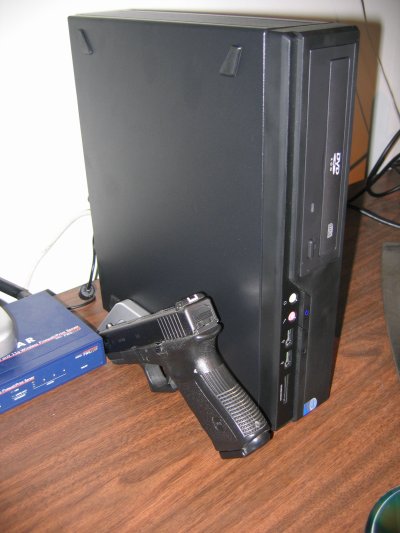I guess it makes me feel a little better on my last day of being able to claim being 34 that there are some of my fellow bloggers out there who still remember programming on punch cards. The first computer I ever used was one of these. No punch cards, but it did have a BASIC interpreter, and you had to load and save programs through a MODEM like device onto an audio cassette. Next machine was this one. We were lucky to have one with an expansion slot and a high resolution color monitor. But hey, it had a screaming fast 1MHz 6502 in it, and a whopping 64K of RAM. It was an aircraft carrier compared to the 16MHz of RAM in the TI. Of course, the TI’s 3MHz TMS9900 was faster than the Apple, but it never felt it.
By the time I hit college, I was using this machine, which I still have up in my attic, and as of a few months ago, still boots MacOS Version 7.5 just fine. Most obscure system I ever had the pleasure of working with was one made by this company, and I have more than passing familiarity with Unisys’ line of A-Series mainframes, and its MCP/CANDE operating system. Not many people left to know what a CS Bus is. A-Series was an interesting beast. Did most of it’s I/O through dedicated I/O processors. The machines were basically designed to move large quantities of data, which is why so many large banks and airlines liked them. Fault tolerance out the wazoo. The entire machine could be paused, and the state of every flip flop and register in the system shifted out through a JTAG interface, then shifted back in if corrections could be made. All the while users would be unaware this was happening. I worked on those systems back in the days when I was a real computer engineer, rather than an IT monkey.

